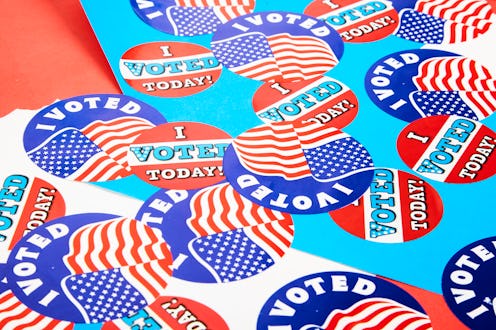News
Getting Between A Voter And Their Vote Is A Crime

One of the biggest controversies in the waning days of the 2016 campaign was the question of voter fraud, prompted by — who else — GOP nominee Donald Trump: “Voter fraud is all too common,” Trump has said at his rallies, according to The New York Times. He encouraged “everybody to go out and watch” the polls for supposedly improper behavior (even though voter fraud is in fact extremely rare). But across the aisle, Trump’s words have raised fears of possible voter intimidation. As millions of Americans head to the polls today it’s important to ask: what constitutes voter intimidation? And what should you do if you encounter it when voting?
If we want to get technical about it, voter intimidation is defined in the U.S. Legal Code as intimidating, threatening, or coercing (or attempting to intimidate, threaten, or coerce) any person for the purpose of interfering with their right to vote for President, Vice President, or Congressional representative. But, since the Constitution gives states the power to run elections, the rules can differ on what people are technically allowed to do, or even where they’re allowed to stand with respect to polling places. While voter intimidation is thankfully uncommon, it’s still important to be aware of what the rules are and what to be on the lookout for when you go to the polls.
Still, the law can be pretty vague on what real-life voter intimidation might look like, so the American Civil Liberties Union has provided a few examples on their web site, including “aggressively questioning voters about their citizenship, criminal record, or other qualifications to vote;” “falsely presenting oneself as an elections official;” and even “Spreading false information about voter requirements, such as an ability to speak English, or the need to present certain types of photo identification (in states with no such requirement).” The Brennan Center for Justice also includes in its list of intimidating behaviors brandishing weapons in front of voters, being followed and photographed, and having license plate numbers recorded.
Most frustratingly, voter intimidation techniques are often geared towards those for whom the right to vote has been the hardest fought: people of color and non-English speaking citizens. In 2012, billboards went up in Ohio emblazoned with the penalties for committing voter fraud in an attempt to intimidate minorities. “It’s voter intimidation,” Cleveland City councilwoman Phyllis Cleveland told the Huffington Post. “That was my gut feeling the first time I saw them.
While 2016 has not had any billboards, the words of the GOP candidate have been hard to ignore, and though stories of voter intimidation have been few so far during the 2016 vote, it’s important to know what to do should you come across them.
The first thing to remember about reporting voter intimidation is that it’s a lot like stranger danger — you can report it to any responsible official at your polling place, including poll workers, election commissioners, county clerks, or state boards of election. You can also call hotlines set up by the Justice Department (800-253-3931) or by the voting rights group Election Protection (866-OUR-VOTE or 866-687-8683).
And, failing all else, document the sh*t out of it — it’s 2016, and nobody needs to have a blind eye turned on a violation of their right to vote.